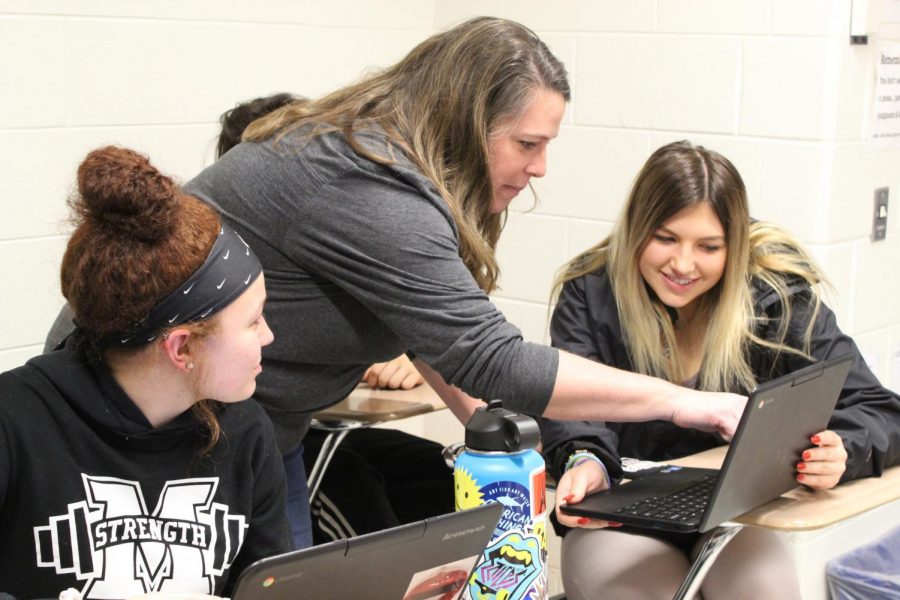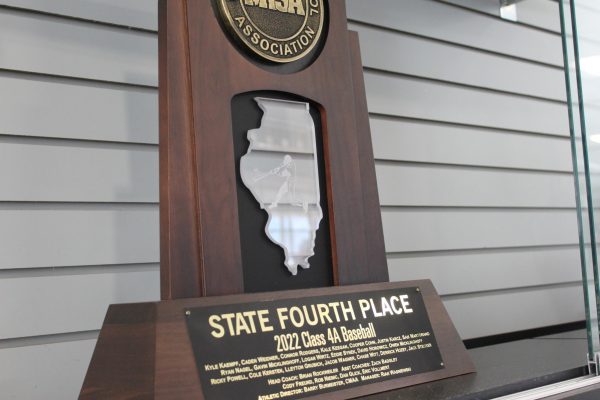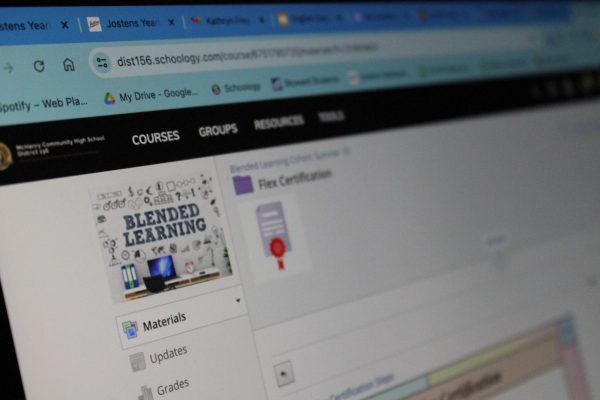Opinion: The best teachers use informal teaching styles
Though some students may like laid-back classrooms and others might prefer authoritative teachers, the answer lies somewhere in-between
Every staff member at MCHS teaches in their own unique way. English teacher Stacy Rockweiler assists two of her students in her sixth period Rhetorical Analysis of Media class.
January 22, 2020
While walking to class, a student feels a weight lifted off her shoulders because the teacher in her next period is understanding. They are approachable, and it feels safe to talk about schoolwork that is combining with the overwhelming stress at home. The student has noticed the different teaching styles throughout her years of being a student. The informal style of teaching works best because it’s casual yet has a set standard of rules, which is exactly what students need to succeed.
Laid-back teachers are easygoing and understanding, and their students most often work independently. However, teachers with this style should get involved in the class more. Their job doesn’t just impact their life and their families, it impacts this generation. To give the gift of knowledge is life-changing, yet many teachers use different techniques to help students memorize standardised facts for the next quiz or test. Schoology is an easy way for MCHS to reduce their use of paper, however some students are expected to complete the assignments on their own without much explanation. Throughout a person’s lifetime, people learn to adapt to solving problems on their own. There should be a balance of online assignments and class discussion if the subject allows. ![]() Loading ...
Loading ...
Authoritative teachers are assertive when speaking to their class. Teachers who demand authority create specific rules for their own classroom, and students at MCHS respect this. There are times when commanding authority is not an appropriate approach, because there are students who do not feel comfortable with the added stress that a strict teacher would hold. Every teacher at MCHS should teach with an open-mind and use compassion like the way Erin Gruwell does in the story “Freedom Writers”. When Gruwell is given the tough, unteachable students she learns that she needs to build trust and respect in order to teach them.
Informal teachers have a combination of qualities that make them the best teachers for our generation. This style of teaching is the best because they are assertive when need be, respectful to students, and understanding. “My method for [teaching] especially like classroom management and approaching my students is to treat [the students] how I want to be treated,” Hagerty social science teacher at MCHS says, “and to form a basis of respect.” Sometimes a teacher needs to be demanding—iIt is responsible for a teacher to make sure the students are not wasting the class period socializing, because ultimately work needs to get done. Informal teaching positively impacts classrooms, because inviting teachers make class more exciting. “I try to care about each student as individuals,” Stacy Rockweiler an English teacher at MCHS explains, “so that I can best help them grow and meet their needs.”
Teachers develop different styles of teaching depending on their habits and personalities. Not all informal teachers have to think alike. An informal teaching style is easier to learn from than a teacher who is strictly authoritative or laid-back. Teachers have the skills students need to pass the class, however the way a teacher educates impacts a students ability to comprehend and learn the information in class.























